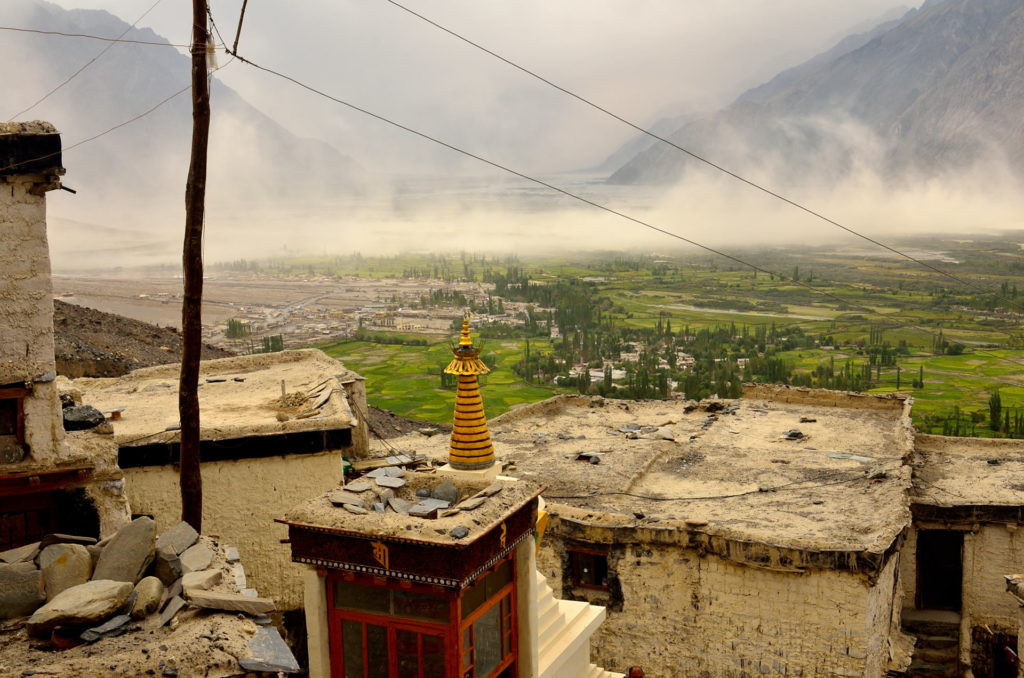
Switch on the AC at least; I told the driver but he politely refused fearing the engine may permanently be affected by the sand particle. We had been inside the vehicle for 15 minutes now with all windows tightly closed, waiting for this sand storm to pass. As if the already thin air outside was not enough some dust particles still managed to enter the vehicle even though all windows and doors were closed, making it a bit suffocating for us. We were standing still right in the middle of a severe sand storm near the base of Diksit Monastery. Visibility was near zero. We were in the open and directly on the path of this storm. The Ladakhi song which we were listening to was now stopped and the only sound we could hear now was the shrill whistling sound of the storm that was literally passing through us. Even a heavier vehicle like Toyota Innova shook a bit quite a few times during this ordeal. This was the first time I was in the middle of any sand storm!
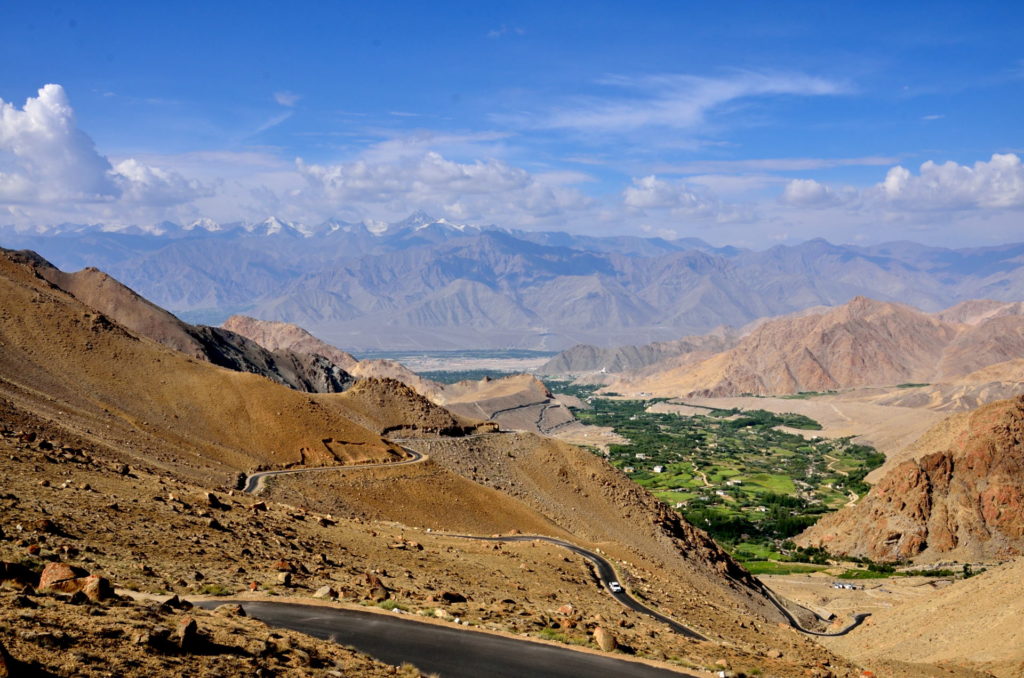
The beginning of the day was perfect though with clear blue skies. Our plan for the day was to pass through “the Highest Motorable Road” in the world with night stay at Nubra valley. The vehicle was the same, so was the driver- Illiyas- we called him the ‘Clean Freak’ because of his habit of cleaning the vehicle whenever he stops and has a few minutes at hand. It was kept neat and clean almost all the time. Not that we were complaining but this level of hyper enthusiasm was making me feel a little uneasy about the treatment I met out to my car at home!
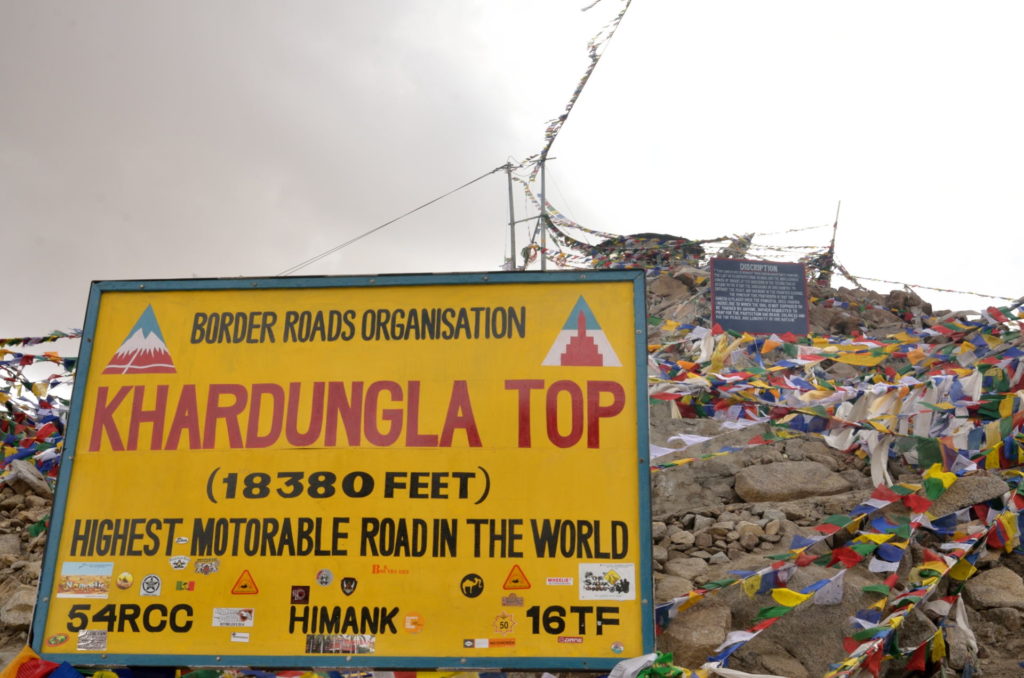
Well, the day’s journey started around 8.30 AM and within about half an hour we reached South Pulu check post. Stretches of the road were bad but manageable and it did not take very long to reach the top of all famous Khardungla Pass. It was a little crowded. Everyone was taking their turn to get the customary photograph with the all famous signboard with colourful Buddhist prayer flags in the background saying the pass is, in fact, the highest motorable road in the world. Without this photograph social media won’t believe that you had been there, so we followed the crowd and took this all-important photograph!
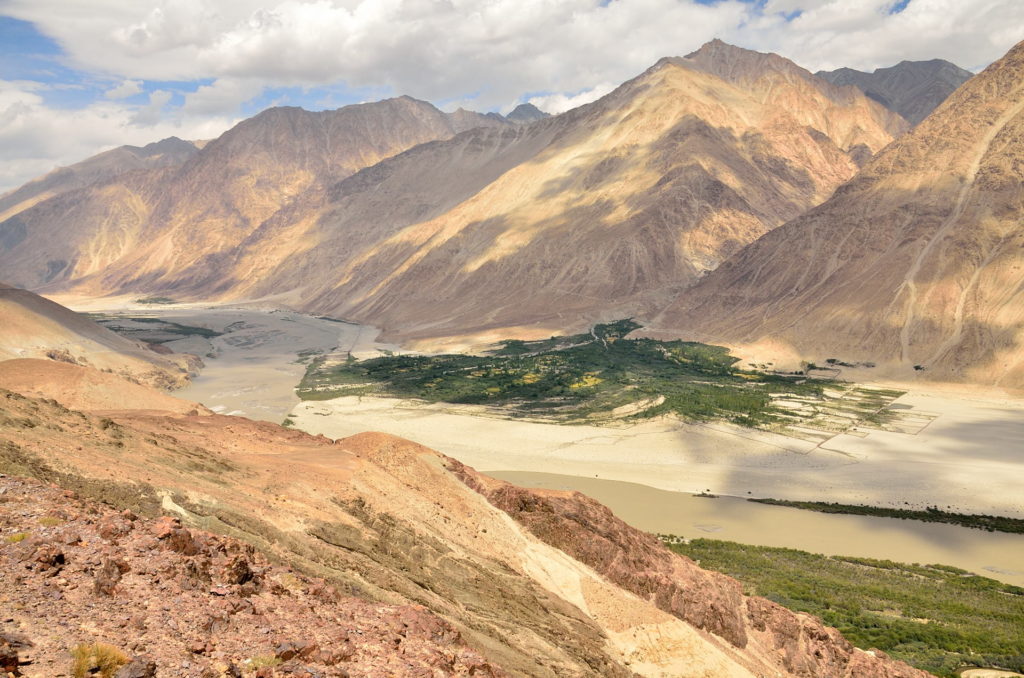
Jokes apart and without going into the height of this pass I must confess that breathing here normally is a tough task and it is better to follow the advice of not staying there for more than 45 minutes at a stretch. So after the photo session and sipping hot black tea from the army canteen there we started climbing down. The other side Khardungla Pass appeared even more beautiful led us to the beautiful Shyok valley by late afternoon.
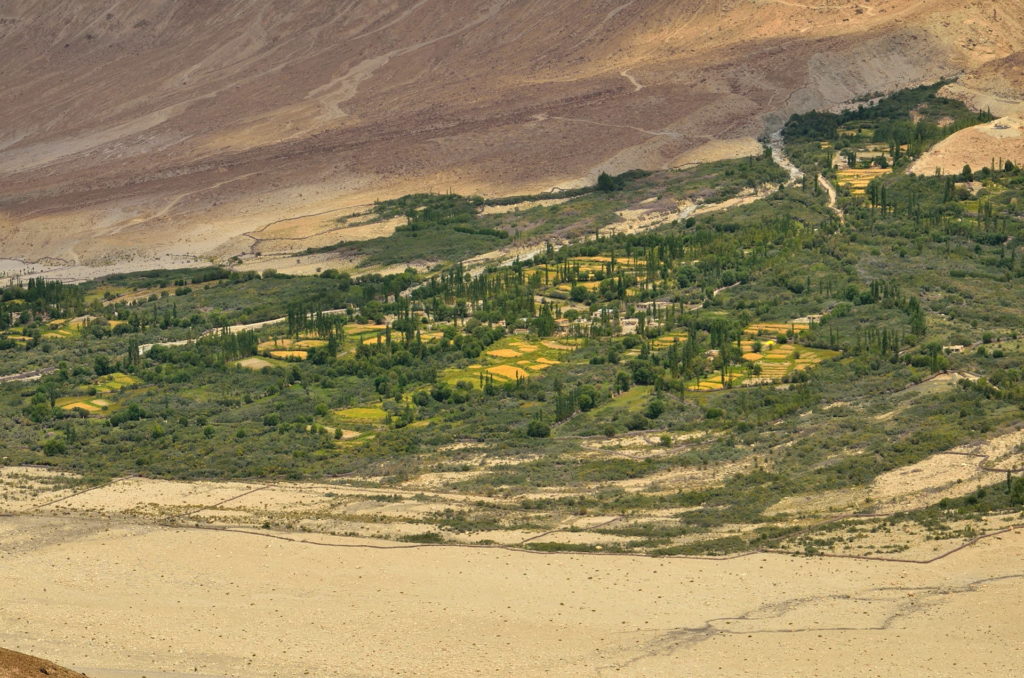
This beautiful valley gets its name from the Shyok river that originates from Nimo glacier near Siachin. The name Shyok literally means “The River of Death” in Yarkadi Uyghur language because of its unpredictable nature. But for us, this river with its silvery river bed represented something which we had never seen before. There is an old Chinese saying that says reading ten thousand books is not as good as traveling ten thousand miles. And if a journey is like the kind we were in each mile opens up to new surprises than one could ever imagine. We spend a good time there just staring at the river and the distant tiny villages on the other side of the river, wondering how the life of inhabitants would be without all the luxuries that we take as granted in any other city. Our thoughts were interrupted by a sudden cloud build-up that was started to envelope the sun very quickly, a rarity in this part of the country since these areas receive extremely less rainfall. We also hurried to reach Nubra valley which is still some distance away.
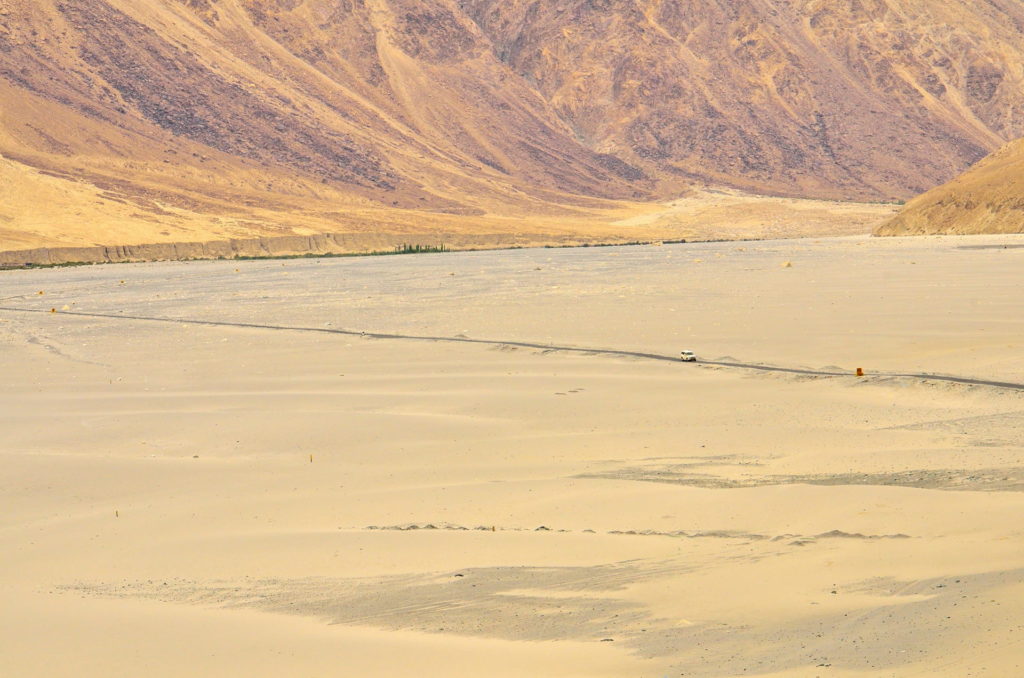
Crossing the valley and passing through the road with very fine silvery sand on both sides running almost at the level of Shyok river to the famed Diskit Monastery is a journey in itself. In fact, the whole journey starting from Srinagar especially after Zozila Pass had thrown surprises to us at every bend of the road. The cloud was playing hide and seek with us but it was getting dense with every passing minute, the wind speed had also increased. It was all cloudy by the time we reached the base of the statue of Maitreya Buddha. The 32 meters high majestic statue faces the Shyok river which is very wide at this point though it was divided into many sub-streams here and it looks more like a sandy river bed.
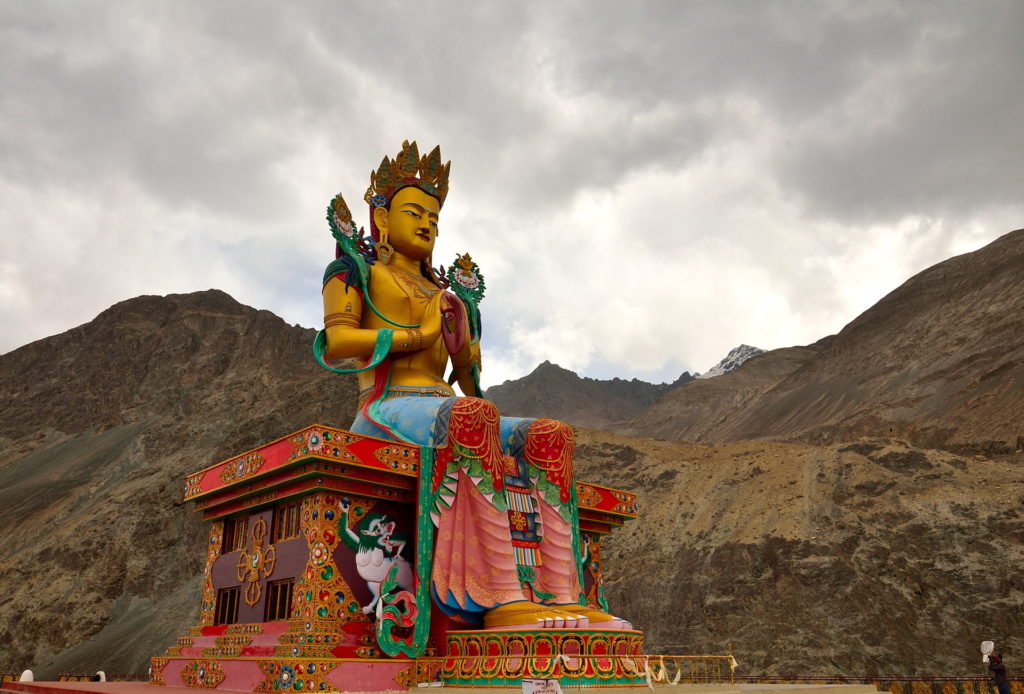
By the time we finished our visit to this very old and famed Diskit Monastery and returned to our vehicle we witnessed a very rare act of nature, the cloud covered the sun fully making it was almost dark, the daylight was almost gone.
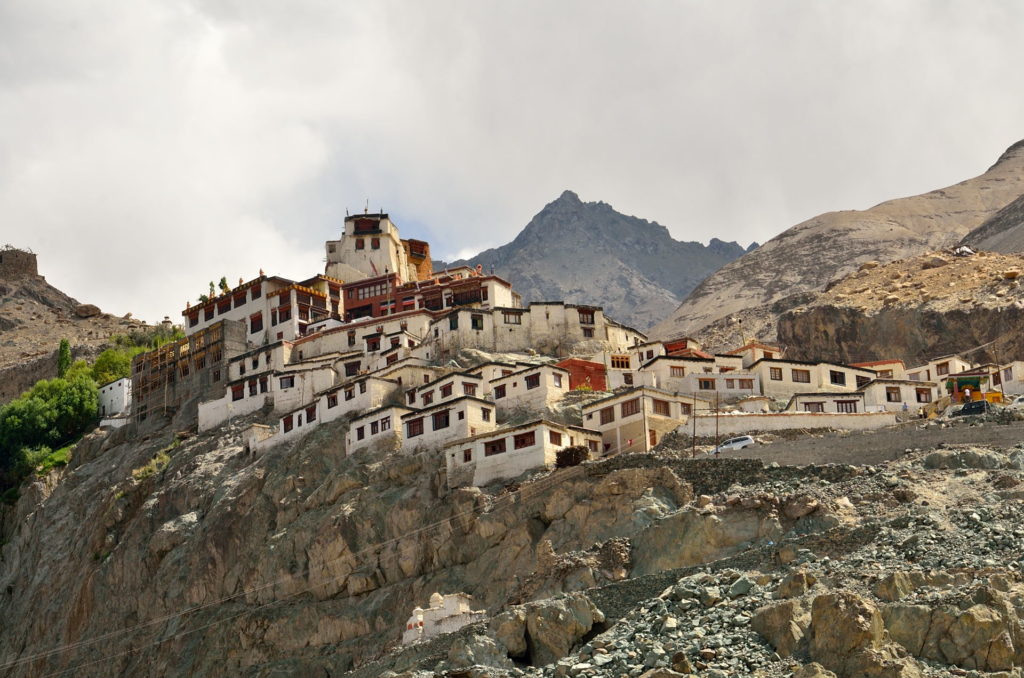
The increased wind speed now turned into a storm. A sand storm, Can you imagine? Sitting at this height witnessing the sand approaching us from distant Nubra valley, covering all the villages on its way with sand-filled wind, making them totally invisible in no time is something I have not expected and not seen anywhere! Well, I used the last few minutes taking some of the rare photographs of this wonderful and a bit scary phenomenon before taking shelter in the vehicle to escape the storm. Once inside the vehicle we could only hear the sand particles hitting the window glasses, shaking it in the process. The storm was finally over nearly half an hour later and we could now open the windows to allow some fresh air in, though the air still had sand particles in it.
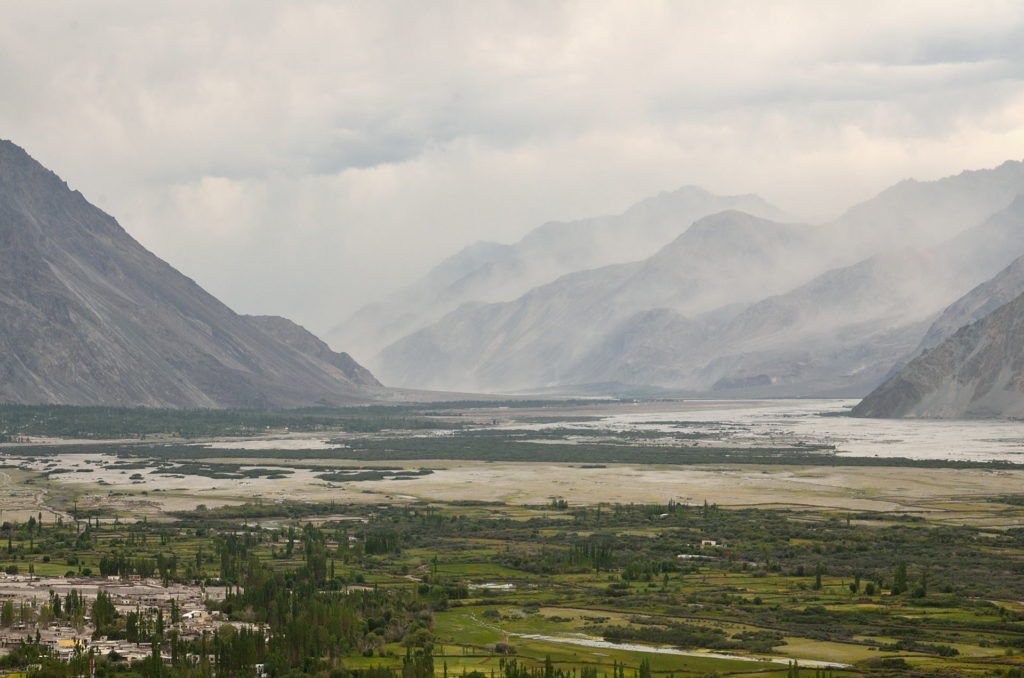
We canceled our visit to Nubra valley for the day since the visibility was still not excellent and it started to rain. So we retired to our pre-booked accommodation for the night on the other bank of Shyok river. Even though the air cleared after some time but glowing moon dashed the chances of any star trek photography! Well, you cannot get everything in one single trip.
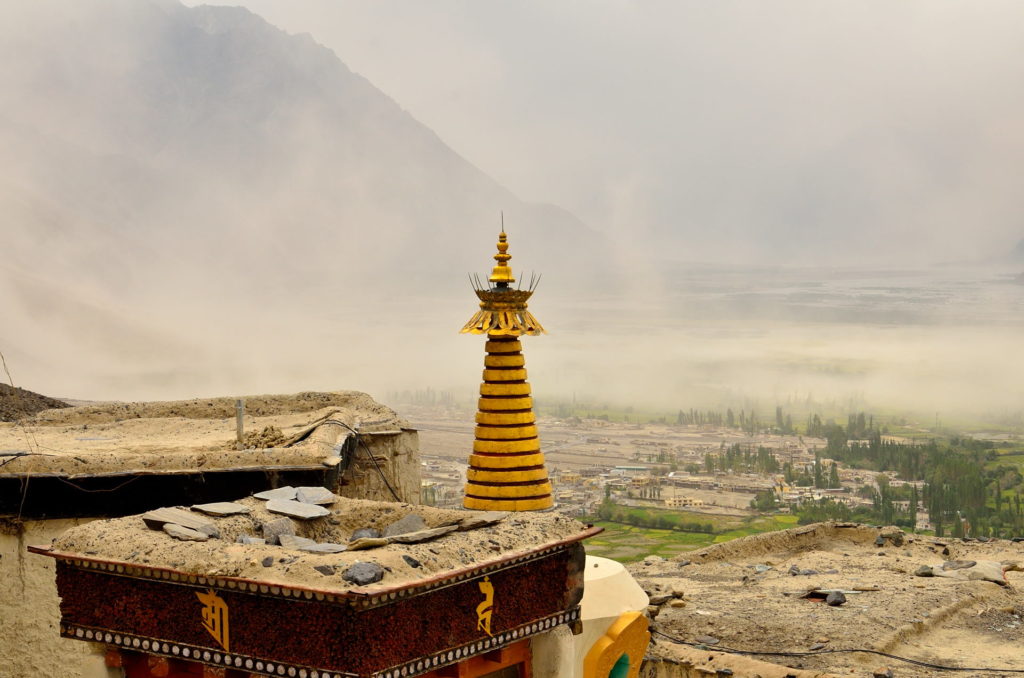
The night was cold and when I woke up in the morning, it was still very cold outside. The day’s plan was to visit Nubra valley and return back to Leh. It was going to be an easy day. Once there I realized why this place is called high altitude desert. If you remove surrounding mountains, some of which were still snow-capped in August and cold environs from the equation the Nubra valley may resemble any other stretch of the Thar Desert with Bactrian camels taking the place of normal camels we see there. These camels with central Asian origin have two humps instead of one as found in their counterparts in Thar and Arabian deserts. These camels are said to be descendants of the camels left by traders passing from China to Central Asia to further Europe on the ancient silk route which incidentally passed through Nubra Valley.
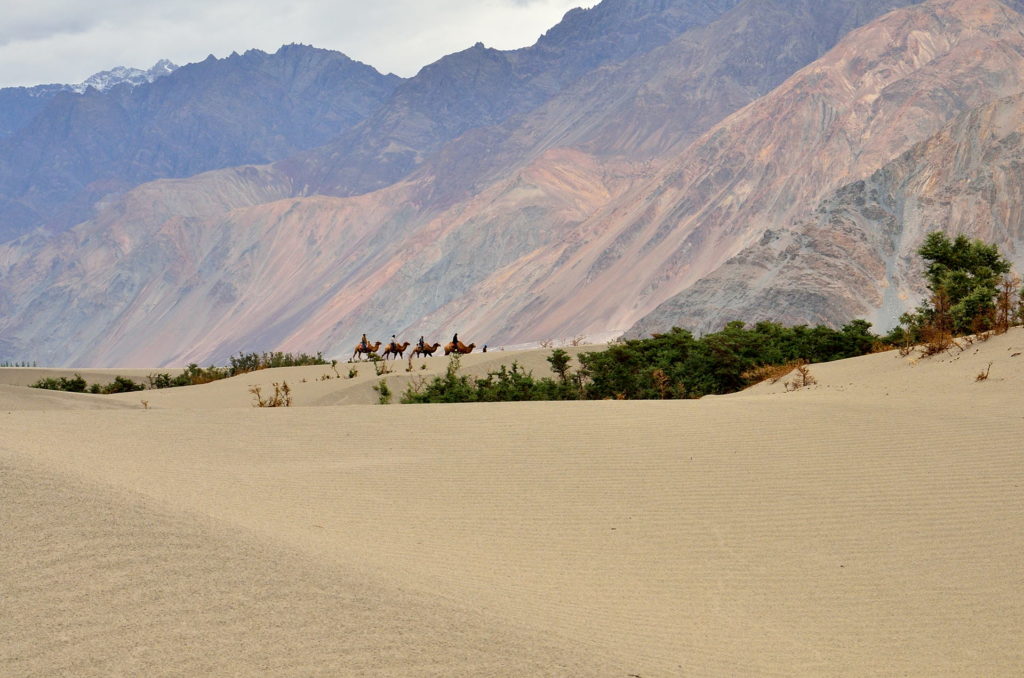
Shooting these fascinating creatures, of course with camera in hand in this equally fascinating landscape would definitely make you forget the ticking watch which do not stop at anything, to appreciate, even a place as beautiful as Nubra Valley. What a bore! If I had a magic wand that could stop time form moving forward I could have used it here! But we are all slaves of that ticking watch so we returned, returned to Leh crossing the same route and slight snowfall at Khardungla Pass. The snowfall even if it was for very little made our trip to Khardungla and Nubra complete in every sense.
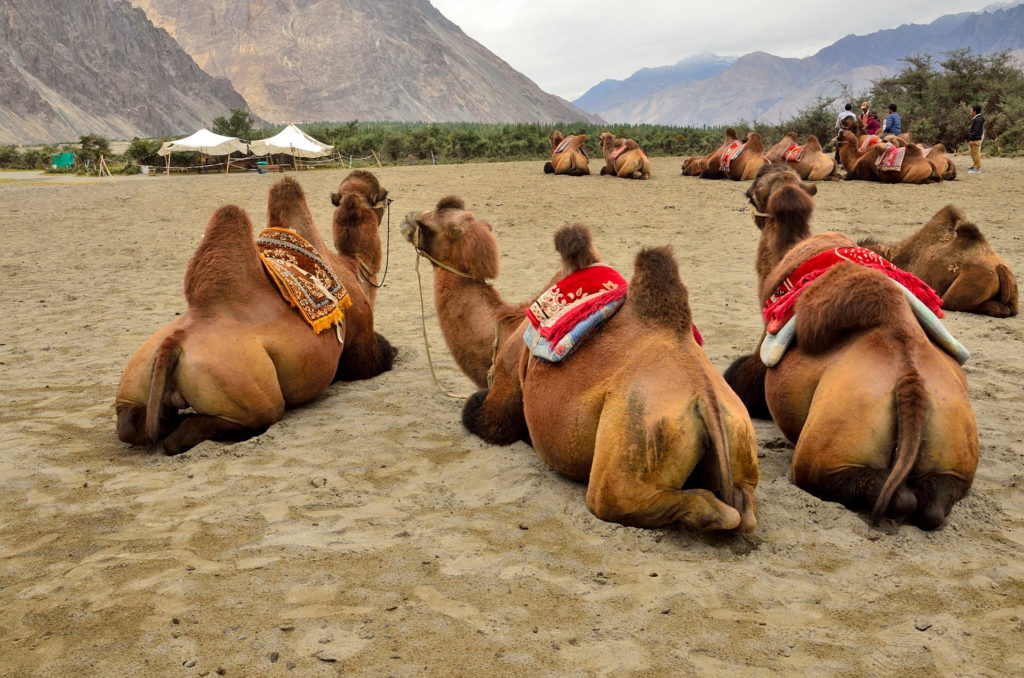
Where to Stay– Nubra valley provides some small hotels and homestays to the travelers coming here. There are some tented accommodations too but it is advisable to pre-book it if you are planning to spend the night here, especially during pick season (Jun- Aug). I referred Devil on Wheels website which is very useful in planning everything about Leh trip.
Travel from Leh- Bike rentals are very popular, taxies on rent either fully or on a sharing basis are very common here. Bus services are cheapest but have fixed timings and stop only at designated places.
Precautions- The Nubra valley has only one fuel station hence it is advisable to carry extra fuel, especially for bikes. Please appreciate the fact that these are high altitude, above the tree line Mountains. The atmosphere is rarefied hence it takes some time to acclimatize. Give yourself time to acclimatize properly. Don’t rush to anything. Apply a good suns cream to prevent heavy tanning. Drink water frequently; take small sips even if not feeling thirsty. These are pristine mountain areas of the country hence please do not litter, create minimum waste and dispose of it properly, minimize the use of plastic.
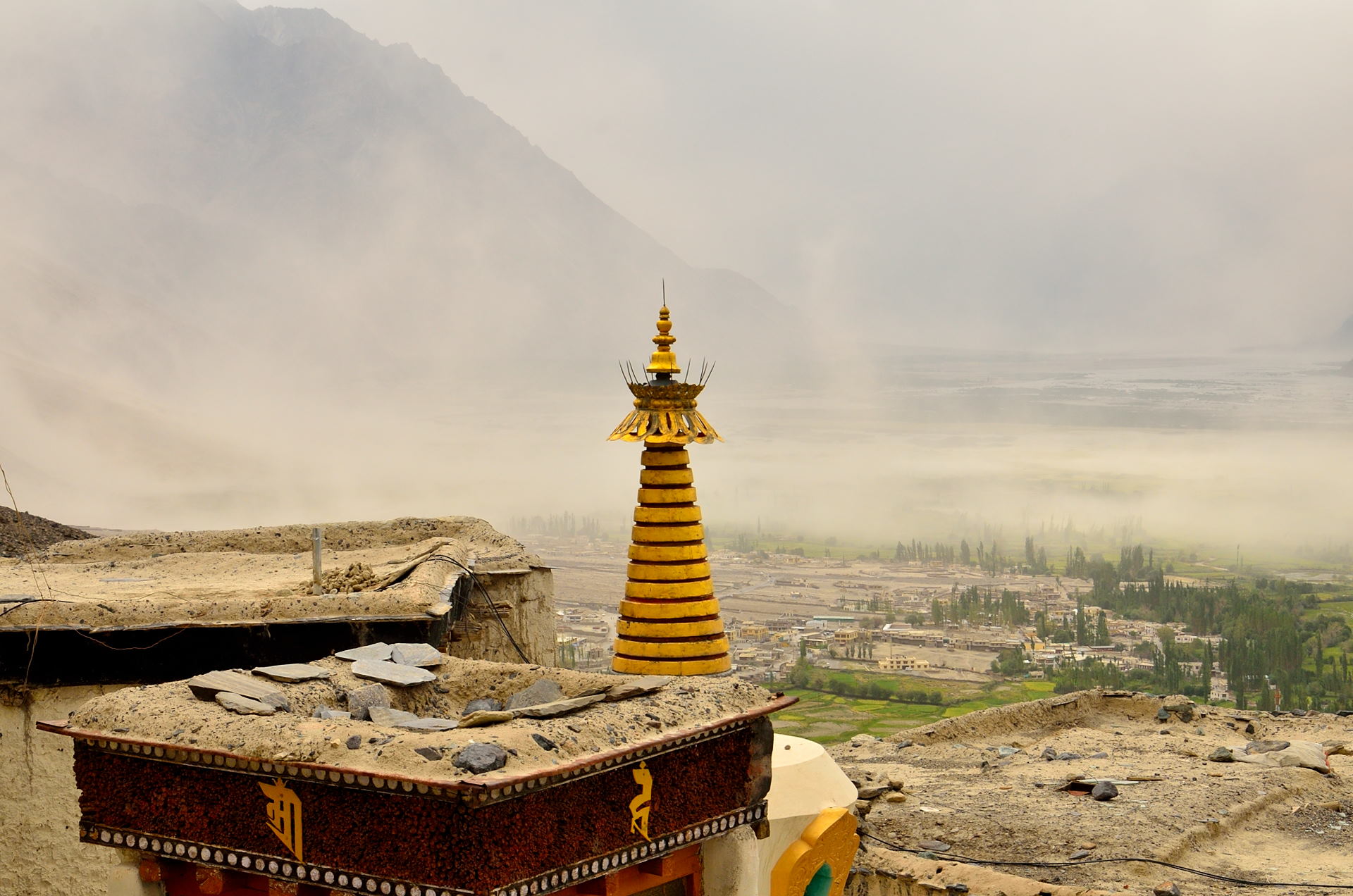
Beautiful 🙂